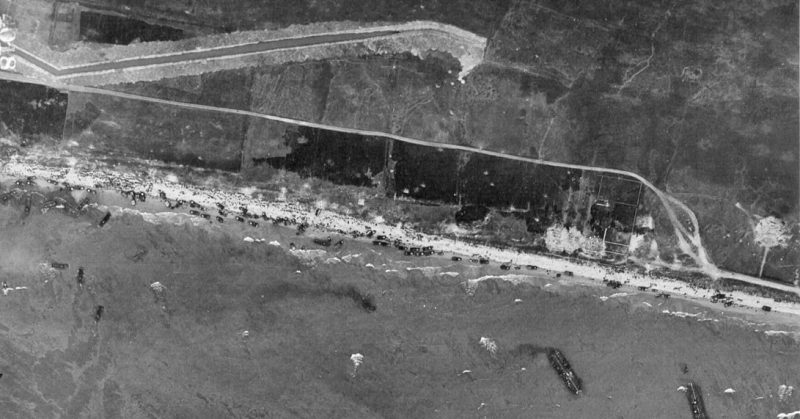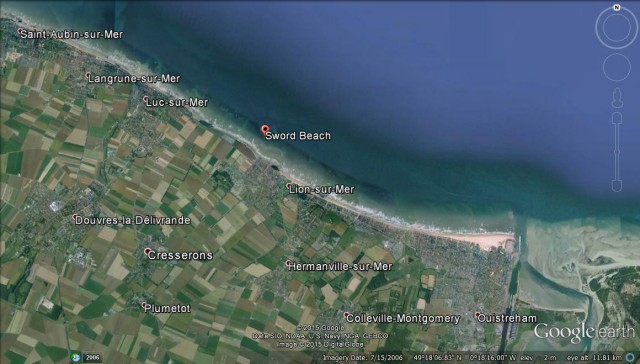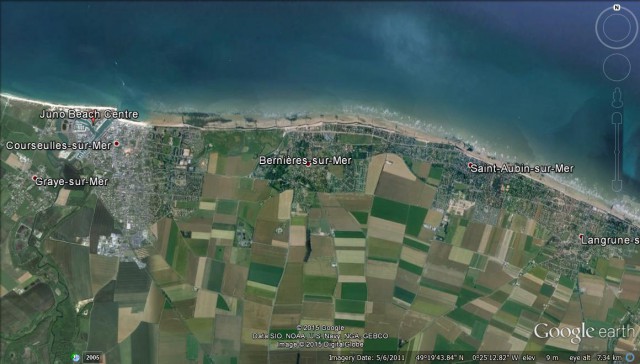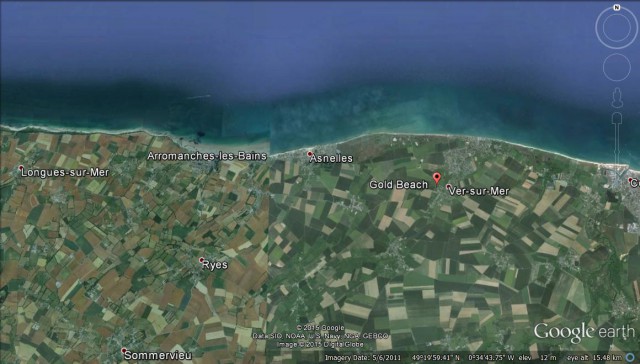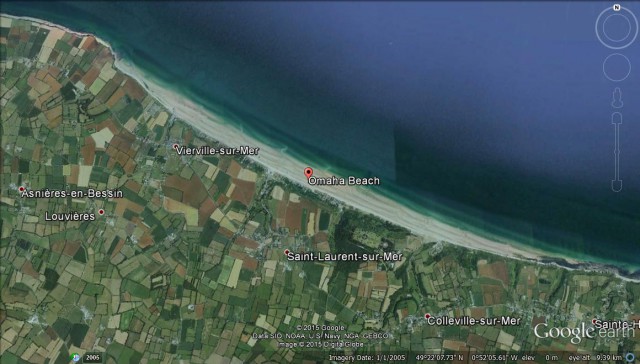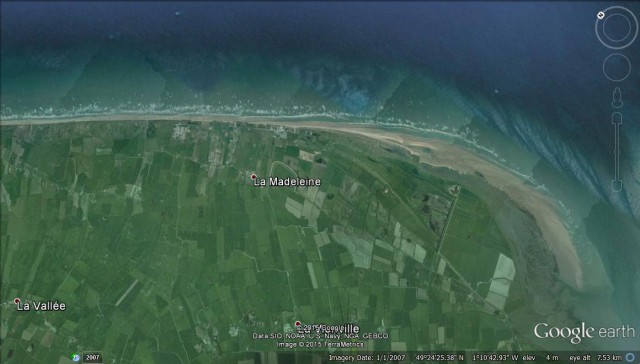Ten years or so ago I was lucky enough to fly along the invasion beaches at 800′ in a C-47. If you ever get the chance to do that, then grab it with both hands.
Below is a birds-eye view of the five Normandy beaches.
SWORD BEACH
British troops landed at Sword Beach. In the first wave of landings were 25 tanks. Only 21 made it safely ashore, and they provided cover for the infantry who followed at 7.30am.
Mine clearing teams were among the soldiers. They had to work fast in treacherous conditions. As the beach became congested with troops, vehicles, and equipment the tide began to advance.
Brigadier Simon Fraser, the 15th Lord Lovat, arrived in the second wave with the 1st Special Service Brigade. They were piped ashore by Lovat’s personal piper, Private Bill Millin.
The No. 4 Commandos advanced to the small port of Ouistreham and attacked a German gun battery from behind. Free French forces lead by Commander Philippe Kieffer overcame fortifications at Riva Bella.
After around an hour’s fighting the King’s Shropshire Light Infantry began its advance to the important city of Caen. It stopped short of the city due to a lack of armour support.
Meanwhile, the German 21st Panzer Division launched a counter-attack between the beaches of Sword and Juno at 4 pm. The attack was very nearly successful, and it was only the fierce resistance of the British 3rd Division that saved the day.
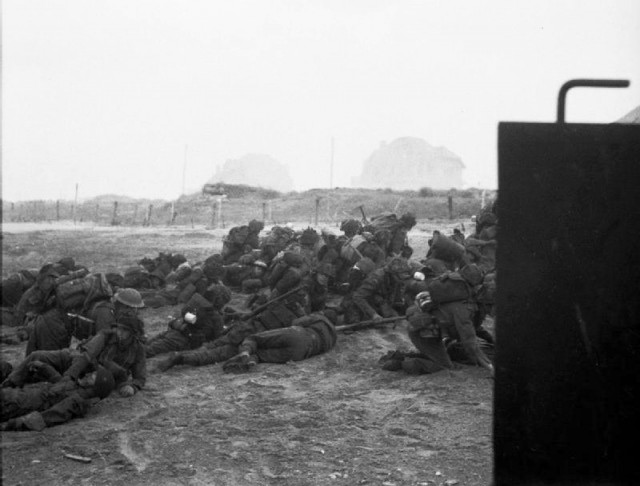
JUNO BEACH
The landing there was delayed on account of weather, and unlike at Sword Beach, most of the troops landed before their supporting armour. Most of the naval bombardment missed their targets.
Consequently, there were many casualties during the landing. Several exit points were established at the beach but at cost. A huge crater at the western flank of the landing was filled in with an abandoned AVRE (Armoured Vehicle of the Royal Engineers) tank and some rolls of brushwood.
These were covered with a temporary bridge (the tank remained there until 1972) allowing movement of troops. As at Sword Beach, Juno became clogged, slowing movement.
The German strongholds were at Courseulles-Sur-Mer, St Aubin-sur-Mer, and Bernières-sur-Mer and had to be taken street by street. A few kilometres inland, near Beny-sur-Mer, there were machine gun posts that the British outflanked.
Just as the Shropshire Light Infantry were forced to stop before Caen because of lack of support, so the 9th Canadian Infantry halted within sight of Carpiquet.
It was not to be captured until a month later. By sunset, on June 6 the invaders at Juno had lost 961 men.
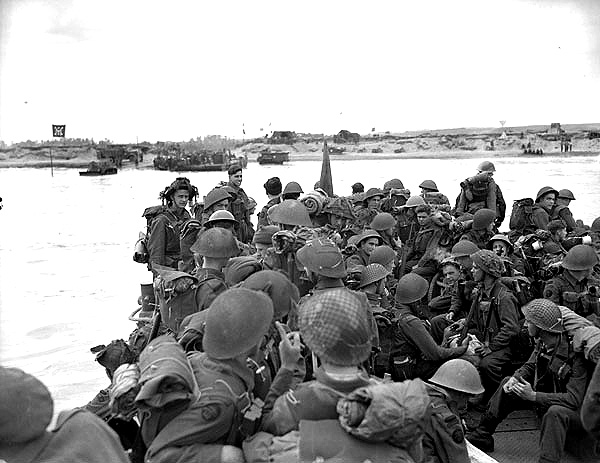
GOLD BEACH
At Gold Beach, the British had an even harder time. High winds made landing difficult, and the amphibious tanks landed on or near the shore instead of further out in the water. Aircraft had failed to knock out Rivière German fortified positions at Le Hamel.
The enemy continued to assail the troops until destroyed by an AVRE tank. Bayeux did not fall on the first day due to the strong resistance of the 352nd Infantry. Nevertheless, the cruisers Ajax and Argonaut took out three guns of a battery at Longues-Sur-Mer (the fourth gun surrendered on June 7) and a tank disabled a casement at Rivierre.
Infantry advanced inland, clearing fortified houses along the shore. The Royal Marines captured Port-en-Bessin the following day. Hampshire Regiment took Arromanches and joined with Canadian forces at Juno.
One Victoria Cross was awarded to Sergeant Major Stanley Hollis, who attack two pillboxes at Mount Fleury. 1000 men fell at Gold Beach.
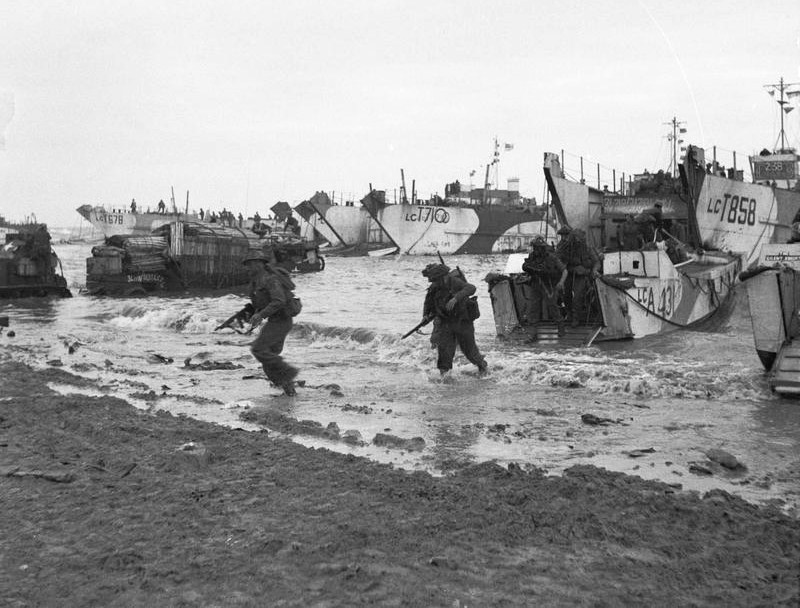
OMAHA BEACH
Omaha Beach was assigned to US forces. This was the most heavily defended beach. An entire division, the 352nd Infantry was waiting. The Americans were expecting to face a single regiment.
US bombers delayed the attack on enemy positions for fear of hitting their own landing craft, many of which were forced to land off-target on account of strong currents. Consequently, most defenses were entirely undamaged when the landings began.
Many soldiers were forced to wade up to their necks under fire. When they did land they were subject to intense fire from the cliffs. 27 amphibious tanks with their crews were dropped into the ocean too far out and sank.
Other tanks were disabled on the beach but nevertheless gave covering fire for the infantry. The rising tide rapidly swamped them.
Indeed, so difficult were the obstacles that at 8.30am the landings were halted to allow enough vehicles to land and provide covering fire. Destroyers were called in to bombard the defenses.
Only towards midday did 600 men exit the beach via five strongly defended gullies. Around this time the Germans began to run out of ammunition and were being shelled.
Finally, the Americans began clearing the beach, though it would take three days before the coastline was secured. They lost about 2000 men.
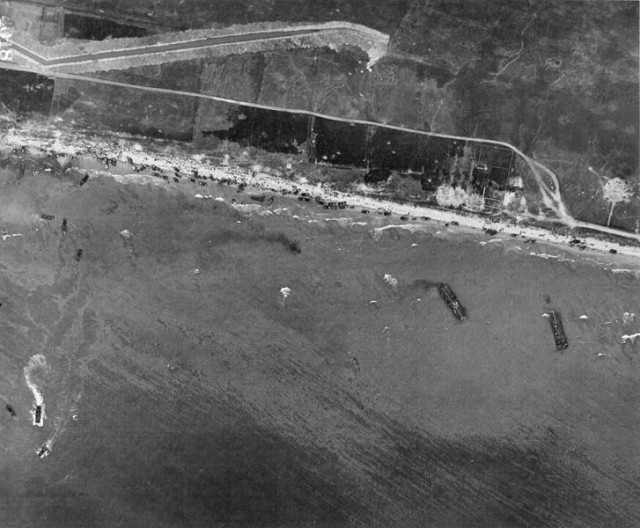
UTAH BEACH
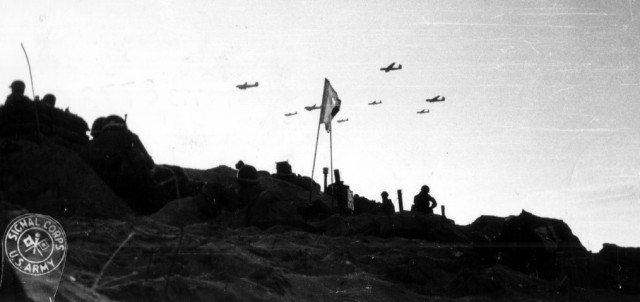
The 8th Infantry Regiment of the US 4th Infantry Division was the first to land at Utah Beach. The shoreline was defended by the 919th Grenadier Regiment.
Strong currents forced it to land almost a kilometer to the south of its intended zone at 6.30 am. There they encountered only one enemy stronghold of the two it would have faced.
After bombers attacked them Brigadier General Theodore Roosevelt Jr, the first officer ashore ordered all the other landings to be diverted to this position.
Assault battalions arrived, followed by 28 tanks and engineers who cleared the beach of mines and other obstacles. Parts or the sea wall were destroyed to facilitate quicker access.
At about 9.00 troops broke out of the beach. Throughout the day they engaged the 919 Grenadiers, seizing the two main strongholds by midday.
Nevertheless, the unexpected landing meant that the area was not secured until the next day.
Casualties were relatively light: 197 out of 21,000 men.
Images Google Earth
